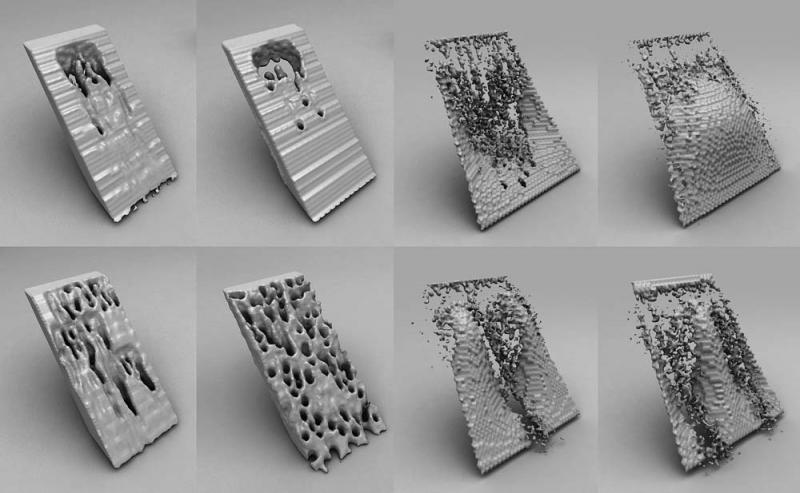
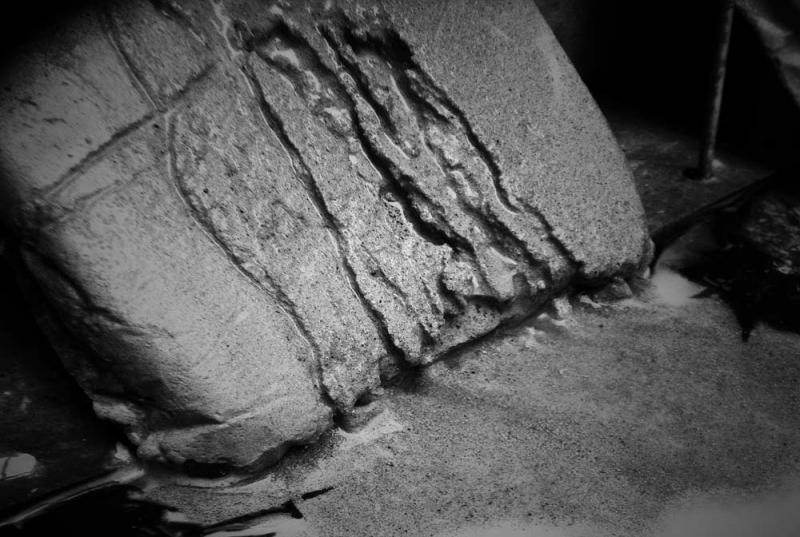
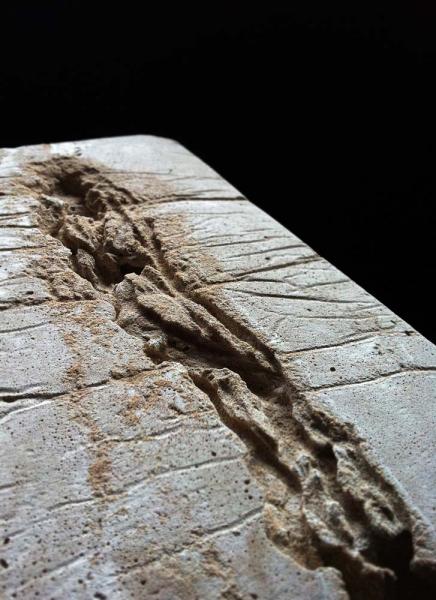
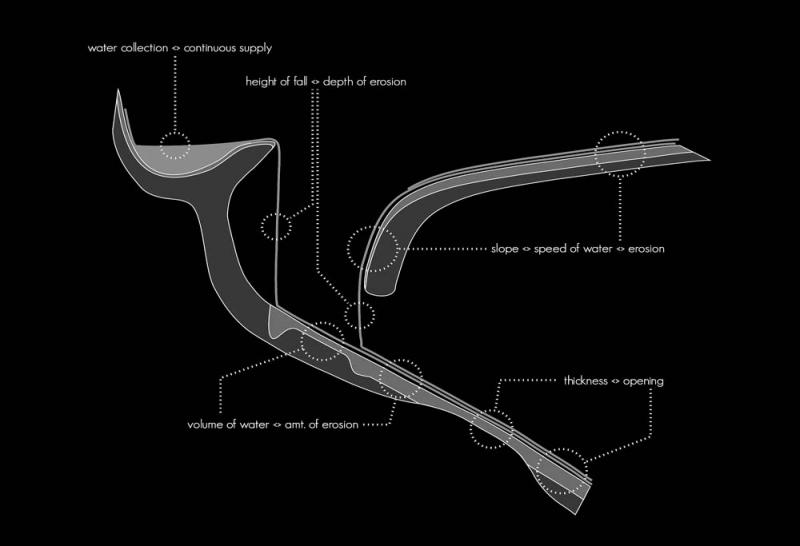
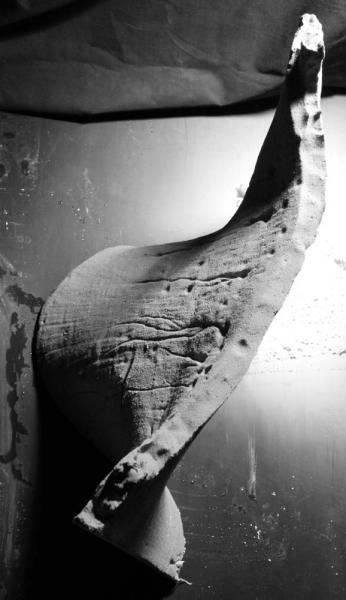

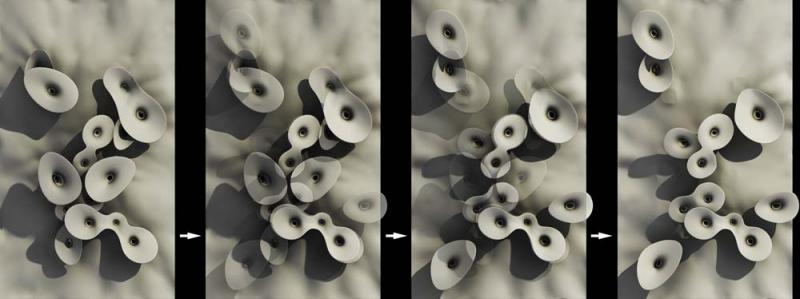
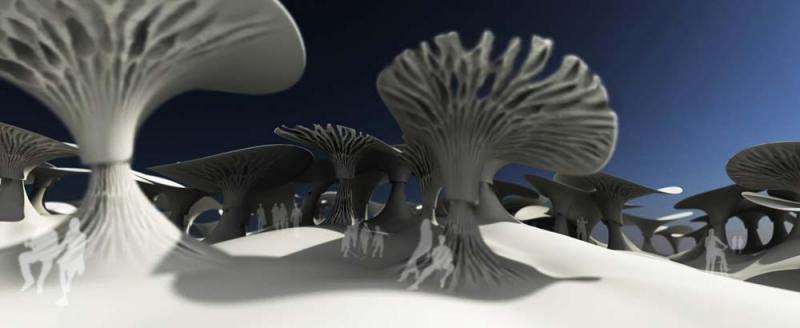
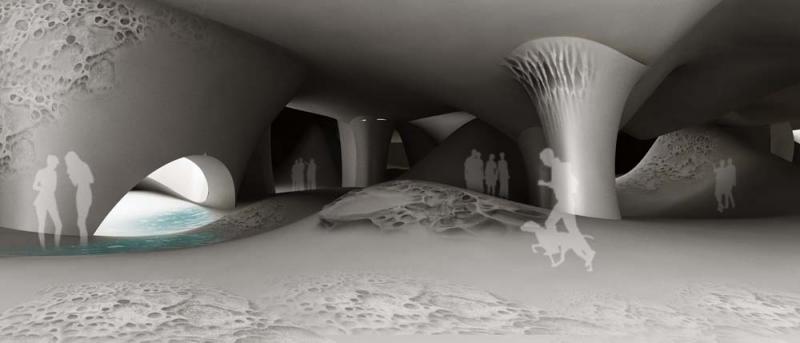
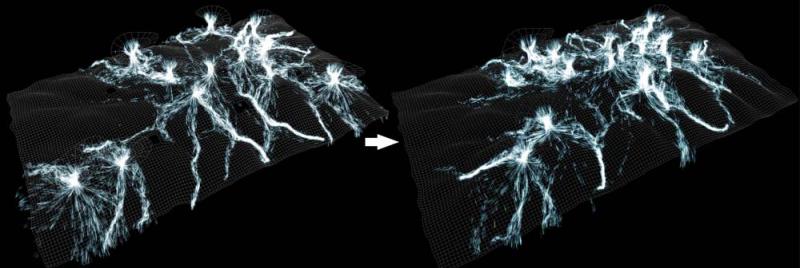
Erosion has always been associated as a destructive force, however as seen in nature it can also produce striking aesthetic effects. Harnessing these potentials, we propose the use of erosion as a constructive force that can act as an active agent in creating an architecture that changes over time.
Our aim is to produce a temporal architecture with a designed life cycle. During this life cycle, natural forces such as rain constantly change the users spatial experience through a topological modification of the building.
An initial topological configuration of built surface, conditions the site’s potential
water flow, facilitating the dynamic process of erosion. It acts as its own
feedback, creating patterns that are highly complex and emergent. This time-based design evolves outside the digital realm, generating a flux between interior and exterior due to the self-organization of material, an architecture that is programmed over its life span.